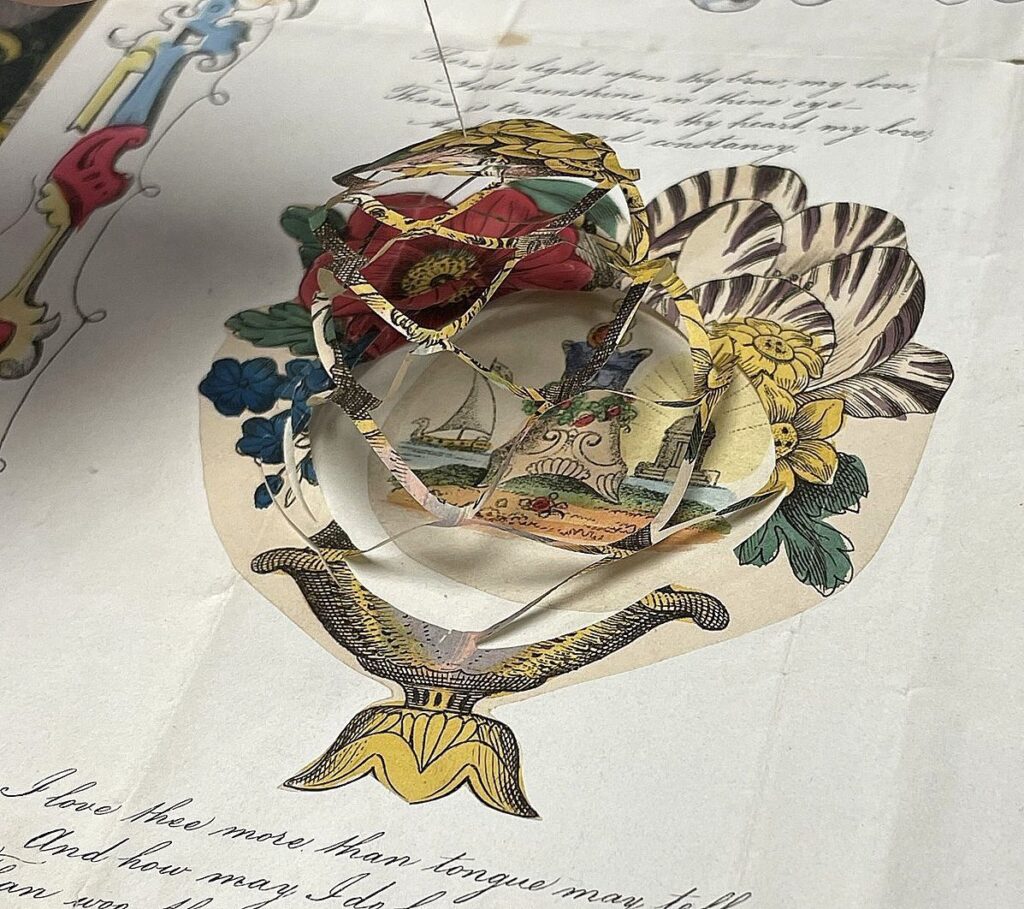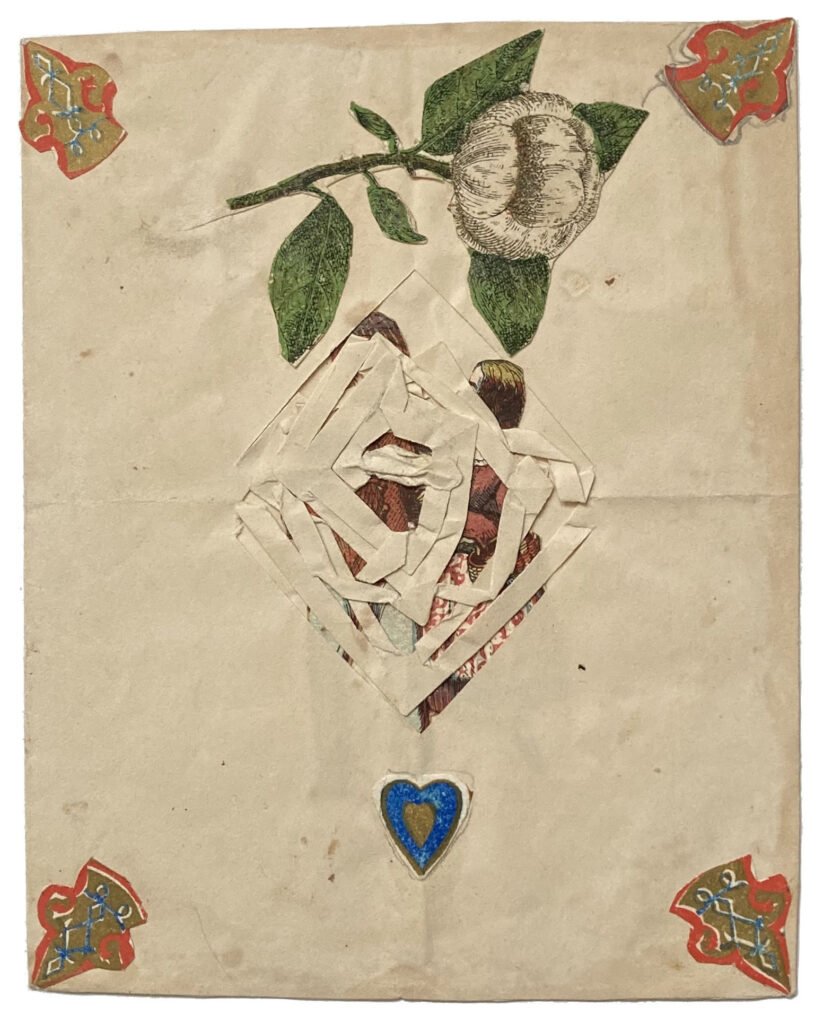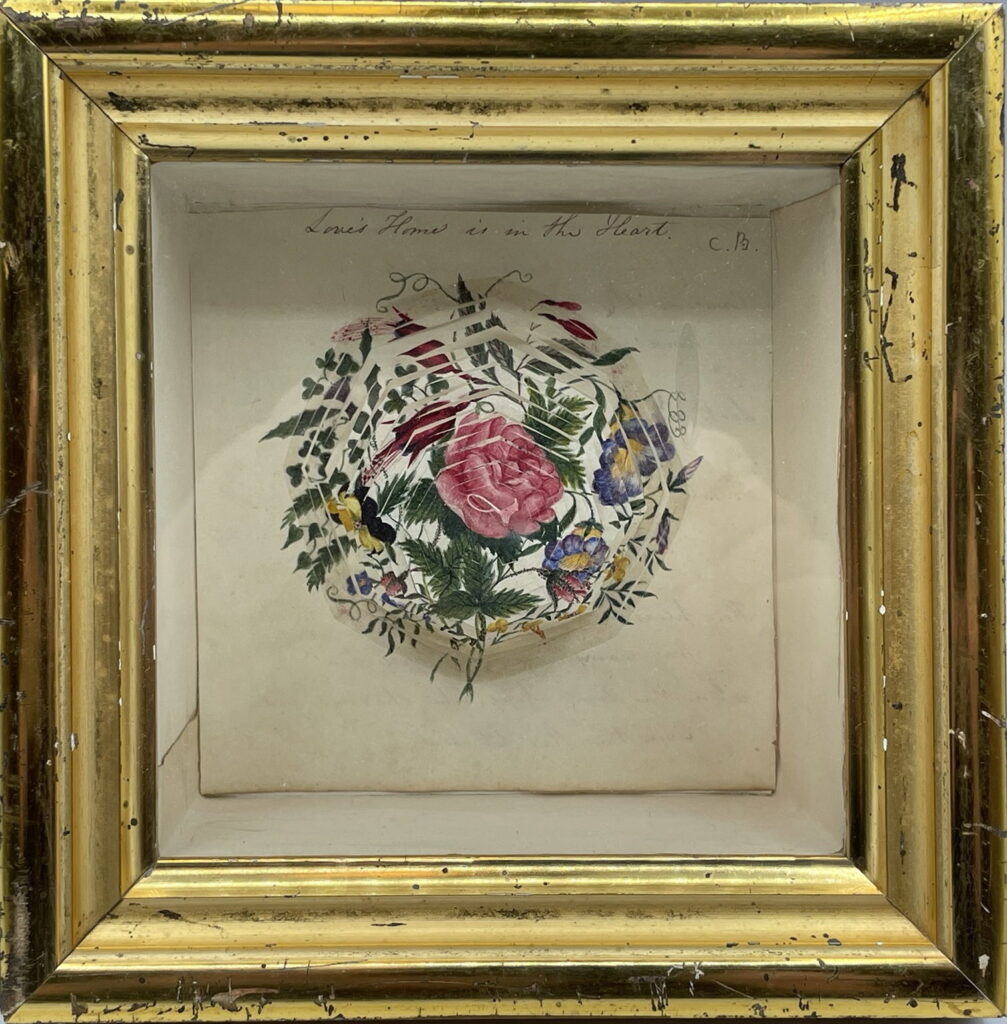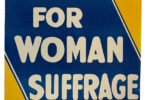Sending love in the form of paper Valentine’s peaked during the Victorian era, first in Britain, then in the United States. Affordable postage rates and materials made these tokens of affection popular with both the fancy elite and plain folk alike. Initially handmade, by the mid-18th century, commercially printed cards were also available. However, without the myriad of distractions we have today, many people still put time and care into crafting their own personalized love notes with special paper, bits of lace, fabric, shells, ribbons, pictures, and poems.
In the early 19th century, more complex designs and puzzles came into play with these love notes. One of the most fascinating of these is the “Cobweb Valentine,” also known as “beehive,” “flower cage,” or “birdcage.” The Cobweb Valentine is a moveable Valentine that, in its simplest form, consists of a piece of paper cut in an intricate connected pattern lifted with a string to reveal a hidden picture on the paper below. Imagery often included symbolic birds such as doves, flowers like red roses and lilies, and Cupid with his arrow.
Examples of these delicate forms can still be found, notably in the Metropolitan Museum of Art Department of Drawing and Prints’ extensive collection of Valentines and also through individual dealers, such as Eclectibles on BIBLIO.
Resources
Valentine’s Day and the Romance of Cobwebs
Meet the World’s Most Prolific Collector Of Valentine’s Day Cards
Amy C. Manikowski is a writer living in Asheville, NC.










